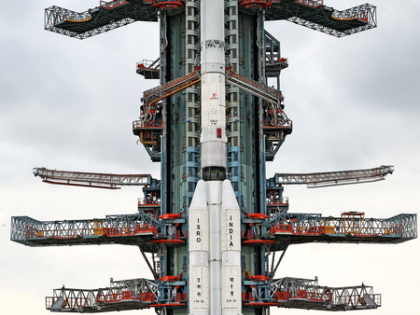NISAR satellite carries 2 radar eyes, not dependent on sunlight: Former ISRO scientist
By IANS | Updated: July 30, 2025 14:29 IST2025-07-30T14:21:11+5:302025-07-30T14:29:35+5:30
New Delhi, July 30 The soon-to-be-launched Indian Space Research Organisation (ISRO) and NASA collaborative Earth observation satellite -- ...

NISAR satellite carries 2 radar eyes, not dependent on sunlight: Former ISRO scientist
New Delhi, July 30 The soon-to-be-launched Indian Space Research Organisation (ISRO) and NASA collaborative Earth observation satellite -- NISAR -- carries two radar eyes and is not reliant on reflected sunlight for monitoring, said Former ISRO Scientist and Director, Jawaharlal Nehru Planetarium, Dr BR Guruprasad on Wednesday.
NISAR is the first joint satellite mission of the ISRO and NASA.
It is set to launch aboard GSLV-F16 from Satish Dhawan Space Centre (SDSC SHAR) in Andhra Pradesh’s Sriharikota at 5.40 pm.
“NISAR is an Earth observation satellite or a remote sensing satellite. It has got two radar eyes. These are not cameras, but radars, which means it is not reliant on reflected sunlight,” Guruprasad told IANS.
“NISAR carries radars rather than optical cameras; thus, it can perform all-weather observations, along with imaging day and night,” he said, adding that the clouds may not deter it from monitoring.
The two radars in NISAR are called the L-band and S-band. Both these will radiate radar pulses to Earth from space, to help the scientists understand the changes happening to Earth.
Further, Guruprasad noted that “NISAR can take images from a height of about 750 kilometers, along a track of around 240 kilometers wide. The details can be three to 10 meters”.
While both NASA and ISRO have previously excelled in making earth observation and weather satellites, the former ISRO scientist said that “NISAR satellite is an excellent example of international cooperation” and that it will benefit the entire humanity.
“Two countries with solid capability in Earth observation are coming together, cooperating, and collaborating. It is very good not only for these two countries, but for the entire humanity, because it will change the perspective humans have about the Earth,” the veteran scientist said.
While India previously launched more than three-four radar-carrying satellites, “NISAR is unique because it has got two types of radars in a single satellite,” Guruprasad said.
Weighing 2,392 kilograms, the satellite will be carried into space aboard India’s GSLV-F16 rocket.
It will be the Geosynchronous Satellite Launch Vehicle’s (GSLV) first launch into a Sun-Synchronous Orbit (SSO).
NISAR will scan the entire globe every 12 days, providing high-resolution, all-weather, day-and-night data.
It can detect even subtle changes in Earth’s surface -- like ground deformation, ice sheet shifts, and vegetation dynamics.
The mission will support many critical applications, including sea ice monitoring, ship detection, storm tracking, soil moisture changes, surface water mapping, and disaster response.
Disclaimer: This post has been auto-published from an agency feed without any modifications to the text and has not been reviewed by an editor
Open in app